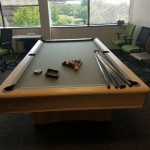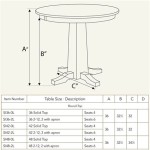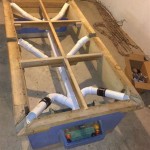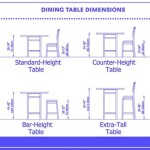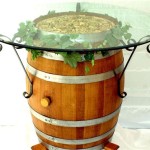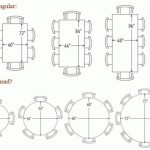French Country Side Tables: A Timeless Addition to Any Home
French country style, with its blend of rustic charm and sophisticated elegance, continues to be a popular design aesthetic. One key element in achieving this look is the selection of appropriate furniture, and side tables are no exception. French country side tables not only serve a functional purpose by providing a surface for lamps, drinks, or books, but also contribute significantly to the overall ambiance of a room. These tables are characterized by specific design features, materials, and finishes that distinguish them from other styles.
The appeal of French country side tables lies in their ability to evoke a sense of warmth, comfort, and history. They often feature distressed finishes, intricate carvings, and gentle curves, creating a visual texture that complements both traditional and contemporary interiors. Understanding the nuances of this style allows for a more informed selection process, ensuring that the chosen side tables seamlessly integrate into the existing décor and enhance the desired atmosphere.
Key Characteristics of French Country Side Tables
Several distinguishing characteristics define French country side tables. These elements contribute to their unique aesthetic and differentiate them from other furniture styles. The consideration of these features is crucial in selecting side tables that authentically capture the essence of French country design.
First, the materials used in construction are a significant factor. Solid wood, particularly oak, cherry, and pine, is frequently employed. These woods are chosen for their durability and natural beauty. The grain of the wood is often highlighted, adding to the rustic appeal. In some cases, reclaimed wood is used, further enhancing the sense of history and character. Metal accents, such as wrought iron legs or drawer pulls, are also common, providing a contrasting element that complements the wood.
Second, the finishes applied to French country side tables play a vital role in their overall appearance. Distressed finishes, such as chipping paint, rubbed edges, and worn surfaces, are frequently utilized to create a sense of age and authenticity. Paint colors typically include soft, muted tones such as creams, whites, grays, and blues. These colors evoke the tranquil landscapes of the French countryside and contribute to the overall feeling of serenity. Glazing techniques may also be employed to add depth and dimension to the finish, highlighting the details of the wood and carvings.
Third, the design and detailing of French country side tables are crucial elements. Carved details, such as floral motifs, scrollwork, and cabriole legs, are common features. These intricate carvings add a touch of elegance and sophistication to the rustic style. The shapes of the tables are often curved and flowing, rather than angular and sharp, contributing to a softer, more inviting aesthetic. Drawer pulls and knobs are typically made of brass, iron, or porcelain, adding to the overall charm and character of the piece. The size and proportions of the table are also important considerations, ensuring that it is appropriately scaled for the room and the intended use.
Selecting the Right French Country Side Table
Choosing the right French country side table involves careful consideration of several factors. The size, style, and placement of the table should complement the existing décor and meet the functional needs of the space. A thorough assessment of these aspects is essential to ensure a cohesive and harmonious interior design.
One of the primary considerations is the size of the table. The dimensions of the table should be proportionate to the size of the room and the surrounding furniture. A large, bulky table may overwhelm a small space, while a small, delicate table may be lost in a larger room. The height of the table is also important, particularly if it is intended to be used next to a sofa or chair. The table should be at a height that allows for easy access to drinks, books, or other items. The surface area of the table should also be considered, ensuring that it is large enough to accommodate the items that will be placed on it.
The style of the table should also complement the existing décor. While French country style encompasses a range of variations, it is important to choose a table that aligns with the overall aesthetic of the room. For example, a more rustic, farmhouse-style table may be appropriate for a casual living room, while a more elegant, refined table may be better suited for a formal dining room. The color and finish of the table should also be considered, ensuring that it complements the existing color palette and materials. The table should also be compatible with other French Country furniture in the space.
The placement of the table is another important factor. Side tables are typically placed next to sofas, chairs, or beds, providing a convenient surface for lamps, drinks, or books. The placement of the table should be functional and aesthetically pleasing. The table should be easily accessible and should not obstruct traffic flow. The table should also be placed in a location that allows it to be seen and appreciated, contributing to the overall ambiance of the room.
Materials and Construction Techniques
The materials and construction techniques used in French country side tables contribute significantly to their durability, aesthetic appeal, and overall value. A deep understanding of these elements is essential in appreciating the quality and craftsmanship of these furniture pieces.
Solid wood is the most common material used in the construction of French country side tables. Oak, cherry, and pine are particularly popular choices due to their durability, natural beauty, and availability. These woods are chosen for their strength, stability, and resistance to wear and tear. The grain of the wood is often highlighted, adding to the rustic appeal. The wood may be sourced from sustainable forests, ensuring that the production process is environmentally responsible. The lumber is typically kiln-dried to reduce moisture content and prevent warping or cracking.
Various construction techniques are employed to ensure the structural integrity of French country side tables. Mortise and tenon joints are commonly used to connect the legs to the tabletop and aprons. This type of joint provides a strong, durable connection that can withstand stress and strain. Dovetail joints are often used to join the sides of drawers, creating a secure and visually appealing joint. The joints are typically glued and screwed together for added strength. The frame of the table is often reinforced with corner blocks, providing additional support and stability.
The finishing process is also an important aspect of the construction of French country side tables. The wood is typically sanded smooth to remove any imperfections and create a uniform surface. A primer is then applied to prepare the wood for painting or staining. Multiple coats of paint or stain are applied, followed by a protective topcoat. The topcoat may be a varnish, lacquer, or wax, providing a durable and water-resistant finish. Distressing techniques, such as chipping paint, rubbed edges, and worn surfaces, are often applied to create a sense of age and authenticity. These techniques are carefully executed to ensure that the distressing looks natural and consistent.
Metal accents, such as wrought iron legs or drawer pulls, are often incorporated into the design of French country side tables. These metal elements add a contrasting element that complements the wood and contributes to the overall aesthetic. The metal is typically treated to prevent rust and corrosion. The drawer pulls and knobs are often made of brass, iron, or porcelain, adding to the overall charm and character of the piece. The hardware is carefully selected to complement the style and finish of the table. The attention to detail in the materials and construction techniques ensures that French country side tables are both beautiful and durable.
French country side tables, with their blend of rustic charm and sophisticated elegance, provide a timeless addition to any home. The careful selection of materials, finishes, and design details contribute to their distinctive aesthetic and enduring appeal. Understanding the key characteristics of this style, considering the size, style, and placement of the table, and appreciating the quality of materials and construction techniques are essential steps in choosing the right French country side table for any interior space.

French Country Painted Round Accent Table Antique Farmhouse

French Country End Tables Accent On Bellacor

Alfred French Country White Washed Wood Side Table Wide Over 24 W Kathy Kuo Home

Sun French Country Small End Table From Dutchcrafters Amish

Catawissa French Country Accent Table With Octagonal Top Natural Christopher Knight Home Target

Parisloft French Country 19 75 In H X 27 5 W Rectangle Natural Wood Top End Table With Distressed White Carved Legs Hc0003 The Home Depot

Cozayh Rustic Farmhouse End Table With Storage Shelf French Country Accent Side For Family Dinning Or Living Room Small Spaces Modern Round Com

French Madame Country Home Coffee Table Decor

Iaf101621 By Style Craft French Country Side Table Made Of Solid Mindy Wood Natural Finish With A Weathered White Ov Hunters Furniture

Sayer French Rustic Gilt Cream Wood End Table Tables Country Furniture


